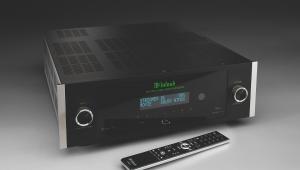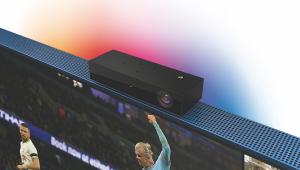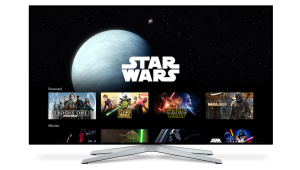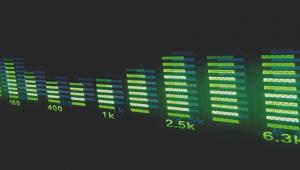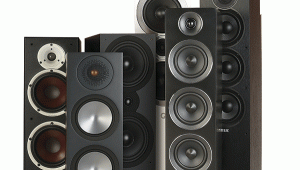Goodbye telly, hello tablet

Television viewing ratings are tumbling, according to a recent report by Nielsen. The company produces the TV ratings for the US market but says the trend is global. We are simply watching television less than we used to.
I do mean the television itself, however, and not television programmes. The latter are soaring in popularity. You see, the tablet, phablet, smartphone and computer are becoming the default devices on which many watch broadcast and catch-up TV content. That bastion of UK life, ‘watching the TV’, is becoming ‘watching the tablet’.
Is this trend another leap backwards for quality and performance, as many people switch from bigscreen HD entertainment to smallscreen convenience? In sound terms it seems that way initially, but if you're listening on headphones then most of the gadget brands have upped their game in audio performance in the last generation or two.
Perhaps watching TV on a tablet isn’t such a retrograde performance step after all. In fact, one could argue that a 10in tablet held at arm’s length has the same field of view as a 110in projector screen viewed from the sofa. Hold the tablet closer to your hooter and you effectively get an even bigger viewing effect, as more of your peripheral vision is taken up by the image. Ideal! An aching arm notwithstanding.
Moreover, one sacrifices very little in terms of picture resolution using a smart device in this way. My iPad boasts 2,048 x 1,536 pixels and my LG G3 smartphone tips in with a ‘Quad HD’ 2,560 x 1,440 resolution. Compare that to my JVC D-ILA projector, which remains stoically 1,920 x 1,080 and, with a 110in screen, generates individual pixels about the size of Birmingham. Damned if I can see pixels on the iPad or G3 even when held at the end of my nose.
The lack of aerial socket or HDMI input means these devices are not going to pick up broadcast TV in the traditional way. But IP services like the BBC's iPlayer and Sky Go, and products like SlingBox, make that a bit of a moot point. Nor are you limited to watching TV in the living room at your allotted viewing time. Suddenly that spare 20 minutes or so sitting in the corner of the bathroom each day becomes a viable time to catch up on EastEnders.
Money in the madnessAnd just look at the cost difference. While Sony is touting its latest 4K projector at £5,000 and 84in UHD TVs cost even more, the latest iPad can be yours for under £400. If family members decry your new viewing habits as not sociable, you can afford to buy them all a tablet and still have plenty of change from a 4K PJ budget. Better still, you don’t have to watch Strictly Come Break a Leg and they don’t have to watch Top Gear – everyone’s a winner.
The next logical step in this evolution is mounting the display device to your head, integrating headphones and using a screen for each eye. That could take up your entire field of view for a fully immersive experience and give you stereoscopic 3D. Devices like the Oculus Rift are not too far away from making that a very real virtual reality. Headset displays have their own challenges of course – it's harder to shovel cinema snacks into your mouth if you can't see what you're doing.
So there you have it. Nielsen produces a report on TV viewing and HCC predicts the future of home cinema is wearing a crash helmet, drinking wine through a straw and picking bits of popcorn out of a bib’s spill-pocket. You read it here first.
 |
Home Cinema Choice #351 is on sale now, featuring: Samsung S95D flagship OLED TV; Ascendo loudspeakers; Pioneer VSA-LX805 AV receiver; UST projector roundup; 2024’s summer movies; Conan 4K; and more
|


